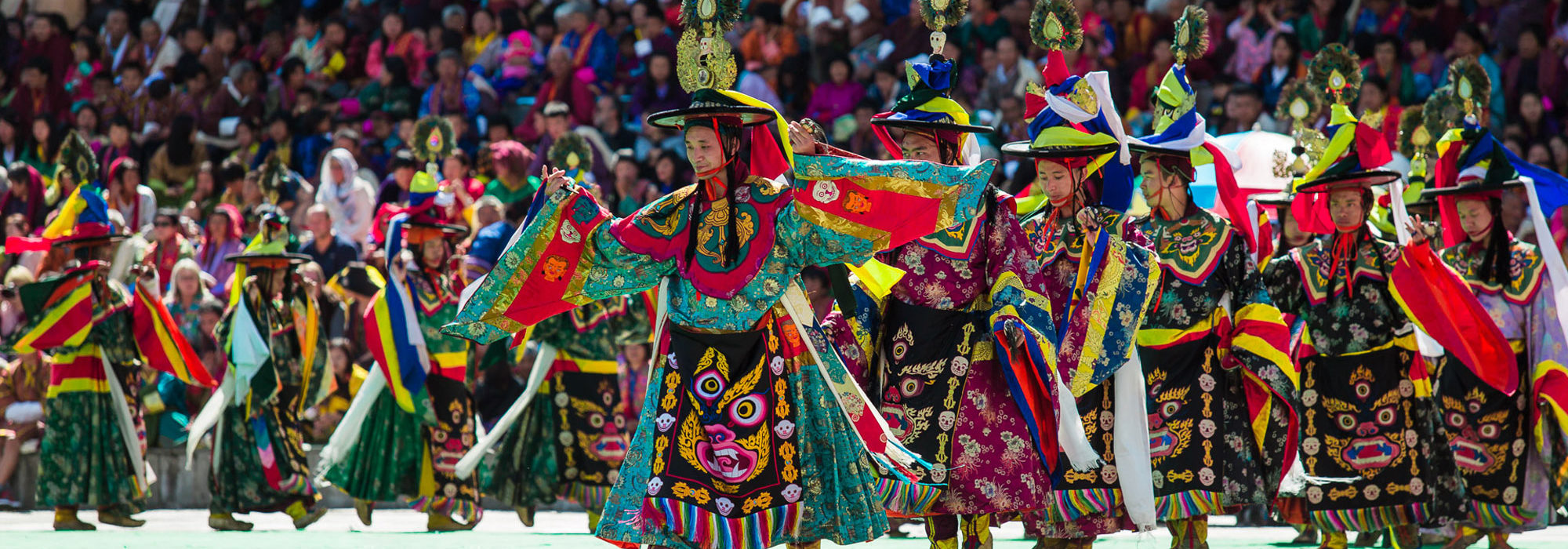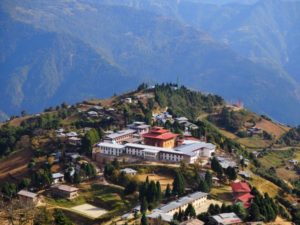Altitude : 1600m/5250ft
Mongar, with elevations ranging from 400m to 4000m, has spectacular landscape with stark cliffs and deep gorges set amidst dense conifer forests. The region is known for its weavers and textiles and fabrics produced here are considered some of the best in the country. In the past this region was known as the bastion of the Zhongarps as it produced some of the finest administrators in the country whose descendants still continue to play an active part in the political scene of Bhutan.
The road approaching Mongar is one of the most spectacular journeys in the country. It passes over sheer cliffs and through beautiful fir forests and green pastures. Travelers passing this way will have the opportunity to visit the Rhododendron garden. There are countless varieties of rhododendrons here and on clear days you can even catch a glimpse of Gangkhar Puensum (7541m), the world’s highest unclimbed mountain.
DRAMITSE LHAKHANG
One of the most notable religious sites is Dramitse Lhakhang. It was built in the 16th century by Ani Cheten Zangmo, the daughter of the renowned Tertön Pema Lingpa. The Dramitse Ngacham or the “Dance of the Drums of Dramitse,” was created in this Lhakhang in the 16th Today, it is a popular dance performed at all major festivals. It is also on the esteemed UNESCO World Heritage list.
ZHONGAR DZONG
The ruin of Zhongar Dzong endures to this day as a testimony to the skill of its builders, most notably the renowned master craftsman, Zowo Balip. It is located on a hilltop overlooking the village of Themnangbi and is visible as one descends to Lingmethang from the highway. Constructed in the 17th century, the Dzong is believed to have been built at the site where the master architect Zow Balip saw a white bowl. A visit to the ruins can be a memorable experience and will give you a sense of medieval Bhutanese administration.
MONGAR DZONG
Mongar Dzong was built in the 1930s and is one of Bhutan’s newest Dzongs. Nonetheless, it was constructed in the same way as all earlier dzongs, without plans or nails. Unlike the earlier Dzongs that are located in strategic positions, Mongar Dzong is located on a small gently sloping area just above the town. A visit to Mongar Dzong demonstrates how traditional Bhutanese architecture has continued to thrive through the centuries.
JARUNG KHASHOR CHOETEN
The Jarung Khashor Choeten is located in Lingmethang, next to the bridge over the Kurichu River. It is modeled after the Jarung Khashor Choeten in Nepal and definitely worth visiting when in the area.
YAGANG LHAKHANG
The Yagang Lhakhang in a small village next to the Mongar town is another sacred monument in the Dzongkhag. It was built in the 16th century by Sangdag, the youngest son of Tertön Pema Lingpa. It was built after the Kupijigtsam Lhakhang in Yangneer village in Trashigang was completed. Today, the Lhakhang plays an important role in the religious life of the people.


